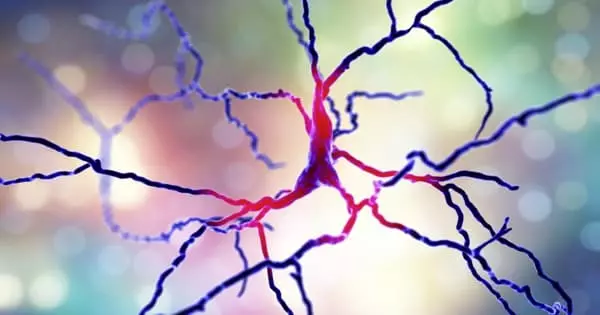Parkinson’s disease is a neurodegenerative disease that progresses slowly and is characterized by tremor, rigidity, bradykinesia, and postural instability. It is the most common movement disorder in middle or late life, affecting about 0.3 percent of the general population and increasing to 1% in people over 60. A new study has identified a promising drug candidate to reduce uncontrolled, erratic muscle movements associated with Parkinson’s disease, known as dyskinesia.
A new study from Texas Biomedical Research Institute (Texas Biomed) and collaborators have identified a promising drug candidate to reduce uncontrolled, erratic muscle movements associated with Parkinson’s disease, known as dyskinesia.
In the marmoset animal model of Parkinson’s disease, the small molecule PD13R reduced dyskinesia by more than 85%. Furthermore, when compared to another drug commonly prescribed for dyskinesia, the animals slept much better while taking this compound. The findings were reported in the journal Experimental Neurology.
Dyskinesia is a common side effect in Parkinson’s disease patients. It is not a symptom of the disease itself but typically emerges about five years into taking levodopa, the leading medication used to restore balance, reduce shaking and manage other motor control issues patients experience.
Researchers discovered that the presence of PD appears to be sporadic or random in many cases, despite the fact that several risk factors have been identified, with age being the most important, followed by genetics and environment. While genetic risk factors are being identified, the genetics of Parkinson’s disease are not yet fully understood.
Marcel Daadi
“Levodopa is incredible; it works like magic; however, it has side effects. If we can eliminate these side effects, we may be able to improve the lives of Parkinson’s patients “According to Marcel Daadi, PhD, associate professor at Texas Biomed and lead paper author.
Drug development for Parkinson’s disease and its side effects is notoriously difficult. This is due in part to the disease’s progressive nature as neurons deteriorate, as well as the involvement of the neurotransmitter dopamine. Dopamine receptors are classified into five types, each with a unique function but very similar structure. Finding a compound that only interacts with the desired receptor is extremely difficult.
Daadi collaborated with Southwest Research Institute to find a compound that only binds to dopamine receptor #3 (D3). SwRI’s RhodiumTM drug discovery software identified PD13R as a likely candidate and predicted how it would bind to D3. Daadi contacted medicinal chemists at Temple University, who is currently researching this class of compounds for their antipsychotic properties.

In cell culture tests, Daadi and his colleagues at Texas Biomed investigated how well the compound targeted the D3 receptor compared to the other dopamine receptors. They discovered that it had a 1,486-times higher selectivity for D3 than for D2, which is the most structurally similar.
The team then gave PD13R to a Parkinson’s disease marmoset animal model. Nonhuman primates developed dyskinesia after receiving levodopa, just like human patients. Dykinesia was significantly reduced after treatment with PD13R. “We were very excited to see the drug’s robust antidyskinetic effect,” Daadi says.
The animals were outfitted with activity monitors, and with PD13R, their activity was low at night, when they would normally sleep. In contrast, when they were given a different drug on the market for dyskinesia, their nighttime activity was significantly higher, implying that PD13R may be a good treatment option without this side effect.
Before human clinical trials can begin, Daadi and his team plan to continue with safety and efficacy studies mandated by the US Food and Drug Administration (FDA). “I am very optimistic that we will be able to move this into Phase 1 clinical trials within the next two years,” Daadi says.
Researchers discovered that the presence of PD appears to be sporadic or random in many cases, despite the fact that several risk factors have been identified, with age being the most important, followed by genetics and environment. “While genetic risk factors are being identified, the genetics of Parkinson’s disease are not yet fully understood,” Sieber says. “However, most [researchers] believe it is a combination of genetics and environment.” Some researchers believe that the combination of genetics and environment can actually accelerate the normal aging process.
Some argue that if everyone lived to the age of 110, we’d all have Parkinson’s or Alzheimer’s disease—that this is an aging brain and that the trajectory has accelerated. That is something that researchers are unsure of. We know there is damage or a lack of function of these dopamine cells at some point in life, but we don’t know where it is or how long it lasts. The early signs of the disease may aid in understanding the disease’s progression because it affects more than just these [dopamine] cells in the brain; it also affects other cells that we’re learning more about every day.”
PD affects more men than women, and “other risk factors appear to be people who live in developed countries or in a rural environment, and the rural environment has been linked to possible pesticide exposure,” Sieber says of one theory.





